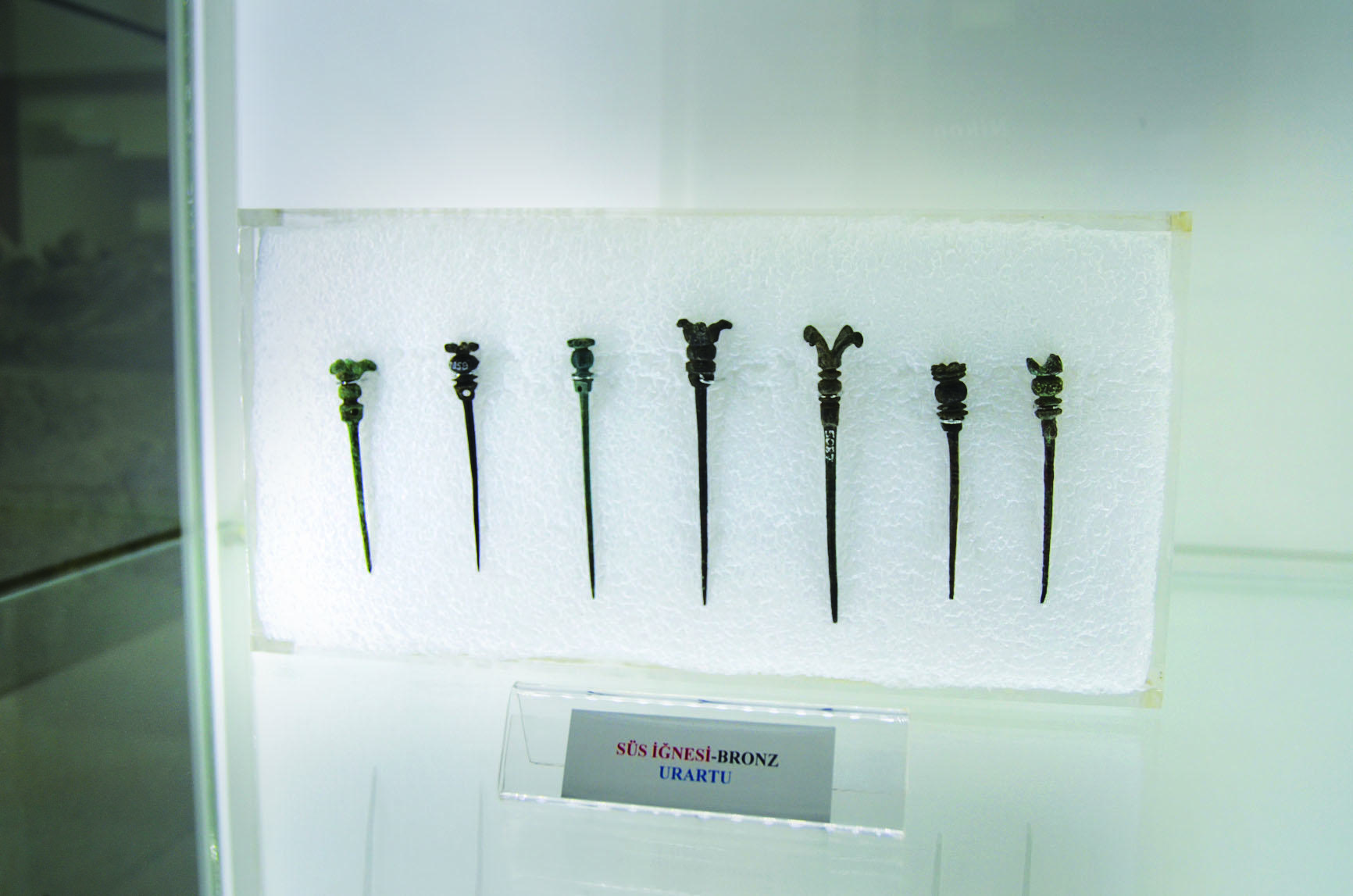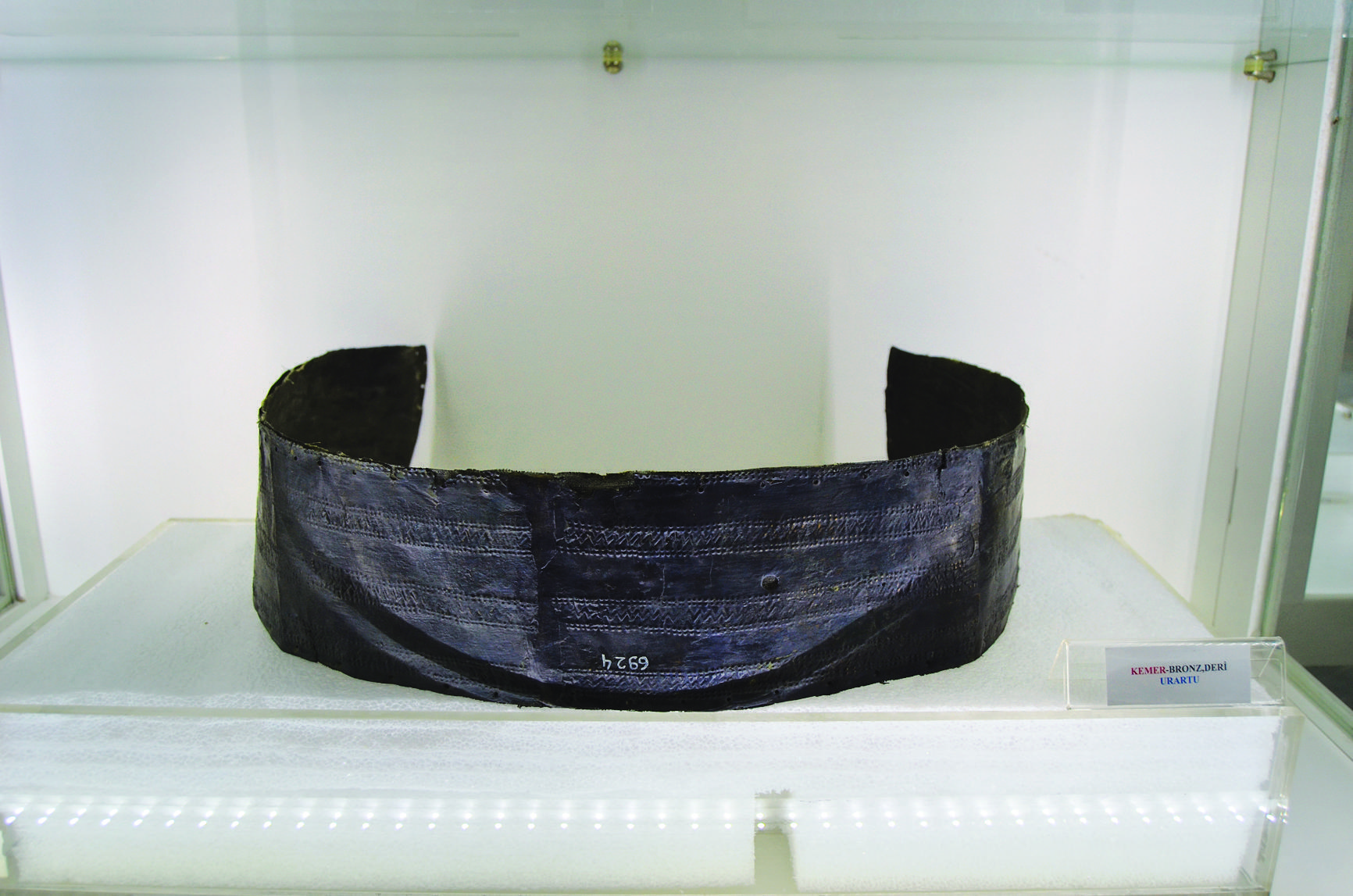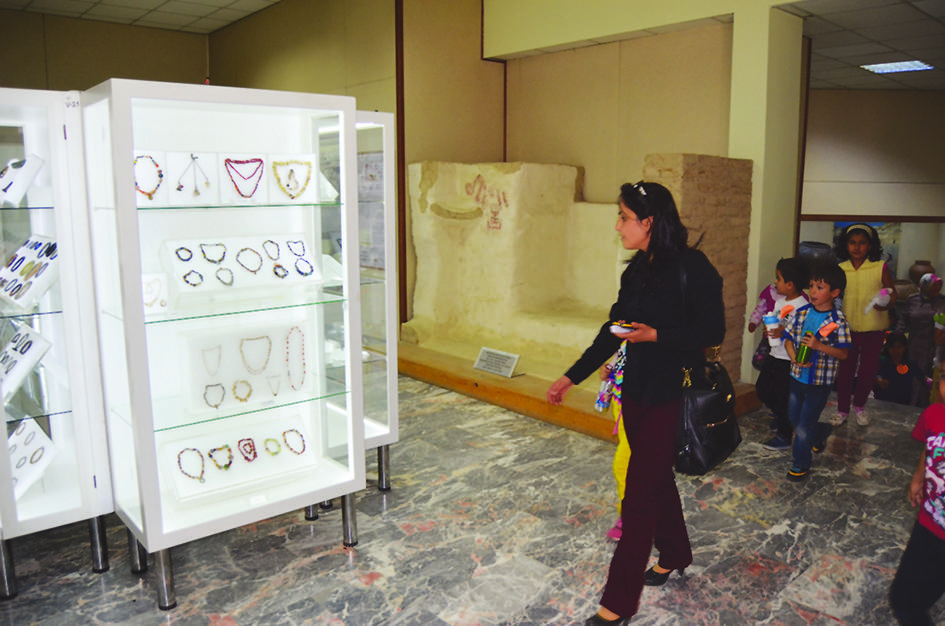Millennia-old jewels go on display
MALATYA – Anadolu Agency

Jewelry that has been produced in different eras from the Bronze Age to Urartian, Hittite and Roman times has gone on display for the first time at the Malatya Museum.
The jewelry, which features rings, bracelets, anklets, necklaces and brooches that are made of bone, bronze, precious stones and silver, provides a glimpse of the adornments women wore throughout the centuries.
All the jewelry on display was unearthed from the Arslantepe, Caferhöyük, İmamoğlu and Değirmentepe mounds.

Malatya Museum Director Tevhit Kekeç said archaeological excavations conducted in mounds, tumuli and classical-era structure layers had unearthed many ornaments belonging to women, adding that they were transferred to museums and then put on display.
Salvage excavations were carried out in Malatya between 1978 and 1988 before the area was flooded by waters from the Karayaka Dam, Kekeç said, adding that jewelry and ornaments were still being unearthed during the ongoing excavations at Arslantepe as well as during the Caferhöyük, İmamoğlu, Değirmentepe, Pirot Höyük, Kösger Baba excavations.
Some of the jewelry dates back as far as 3000 B.C., he said. “These are very thin and finely processed necklaces and bracelets. Along with them, some fibulas [a piece of jewelry that is used to attach two pieces of clothes to each other] and necklaces that we call idols were also produced in the ancient ages. When getting dressed up, women revealed their way of worshipping at the same time.”
Jewelry decorated with figuresKekeç said cross-shaped necklaces were also found during excavations, adding that men also used such jewelry.

“Particularly, the belts of the Urartian kings were ornamented with figures like horses and other animals. There were also glass-made bracelets and necklaces. Some bronze and gold rings have figures of goddesses such as Hera and Athena. Men’s rings have Zeus, Apollo and Ares figures. We see these figures especially in the Roman era artifacts,” he said.
Kekeç said the archaeological excavations in other provinces had unearthed jewelry from earlier eras, adding that thanks to the interest of women, jewelry had been a sector since the ancient ages.
Jewelry made by craftsmen were sold in front of the temples or in city bazaars, especially in the classical era.
“It means that the jewelry sector was born in these eras. It used different shapes throughout history.
Figures and shapes from the previous eras were sometimes used in the next eras. We see it in graves that we unearth during excavations. For example, we see that a snake-head Urartian bracelet was produced of glass in the Christian and Roman eras. Or we see snake-shaped anklets, especially around the arms of the Aphrodite sculpture. Only craftsmen can do this. The sector not only dealt with jewelries but was also influenced by other subsidiary sectors,” he said.
Kekeç said women visiting the museum showed great interest in the jewelry. “They were very interested in necklaces. If they could find someone to do the same jewelry, we believe that they would do it,” he said.
 Jewelry that has been produced in different eras from the Bronze Age to Urartian, Hittite and Roman times has gone on display for the first time at the Malatya Museum.
Jewelry that has been produced in different eras from the Bronze Age to Urartian, Hittite and Roman times has gone on display for the first time at the Malatya Museum.  Malatya Museum Director Tevhit Kekeç said archaeological excavations conducted in mounds, tumuli and classical-era structure layers had unearthed many ornaments belonging to women, adding that they were transferred to museums and then put on display.
Malatya Museum Director Tevhit Kekeç said archaeological excavations conducted in mounds, tumuli and classical-era structure layers had unearthed many ornaments belonging to women, adding that they were transferred to museums and then put on display.  “Particularly, the belts of the Urartian kings were ornamented with figures like horses and other animals. There were also glass-made bracelets and necklaces. Some bronze and gold rings have figures of goddesses such as Hera and Athena. Men’s rings have Zeus, Apollo and Ares figures. We see these figures especially in the Roman era artifacts,” he said.
“Particularly, the belts of the Urartian kings were ornamented with figures like horses and other animals. There were also glass-made bracelets and necklaces. Some bronze and gold rings have figures of goddesses such as Hera and Athena. Men’s rings have Zeus, Apollo and Ares figures. We see these figures especially in the Roman era artifacts,” he said. 